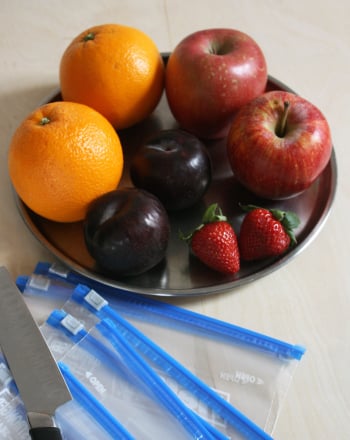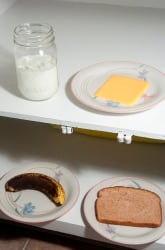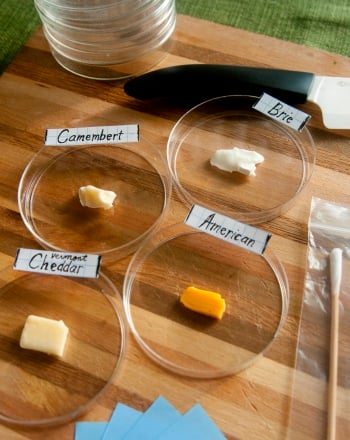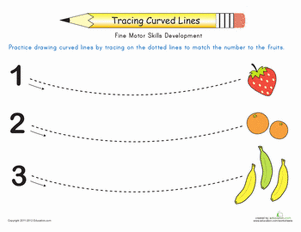Activity
Rotting Fruit! Which Fruits Rot the Fastest, the Slowest? How do We Explain the Differences?
Grade Level: 7th - 8th; Type: Chemsitry
Objective:
The purpose of this project is to determine which of the following fruits, bananas, kiwis, apples, oranges or Clementine’s rot the fastest.
Research Questions:
- How is ripening defined?
- What are some of the common methods of delaying ripening?
- What are some of the substances commonly used as ripening indicators?
- What are the properties of ethylene gas and at what concentration is this gas dangerous?
- What steps can we take to prevent fruit from rotting?
- When is refrigeration useful and when should it be avoided in regard to preserving fruit?
On the informational level, this experiment serves to acquaint students with basic information on the ripening process in fruits. When fruits become overly ripe, we classify them as rotten. Our experience has shown us ripening is a process in fruits that causes them to become more palatable. None of us enjoy eating unripe fruit. Fruits become sweeter, less green and softer as they ripen. In many cases, the acidity of a fruit increases as it ripens, but the higher acidity is not always reflected in its flavor.
Experience has also demonstrated that when most fruits are left outside of the refrigerator, they will begin to brown. The browning is due to the presence of ethylene gas found in the air. The fruits themselves are producers of ethylene, which is a ripening agent. Fruits will remain fresh and firm until the concentration of ethylene surrounding them becomes high enough to stimulate further ripening. Many fruits are shipped when they are not fully ripe and then sprayed with ethylene gas on arrival. On the market today we find specially treated bags and packaging materials that are designed to prevent the exchange of ethylene gas and delay the ripening process. Finding methods of minimizing the ripening of produce is of great interest and of practical value.
This science fair experiment also serves to acquaint students with the essential processes of scientific inquiry such as the importance of using a control, identifying dependent and independent variables, collecting data, depicting data and making good judgments as to the validity and reliability of their findings.
Materials:
- bananas
- kiwis
- apples
- oranges
- clementines
- a bowl
- a camera
Experimental Procedure:
- Gather all the materials you will need for this project. These include bananas, kiwis, apples, oranges, clementines, bowls for each kind of fruit and a camera.
- Place each type of fuirt in a separate bowl where they will not be handled. Keep them at room temperature.
- Copy and reproduce the Daily Observation Chart, making sufficient copies so that you can readily record your daily observations. Make one copy of the Summary Chart.
- Take photos of the before, during and after stages of this experiment.
- Observe each of the fruit samples on a daily basis for a period of 14 days, recording any changes in appearance, any odors, any browning of the skin, and any residue of moisture any signs of dehydration.
- Note if you were able to detect the presence of ethylene gas. If so, how did you record this?
- Review all of your data. Write your final report. Include your photos, charts of data, a summary of your research and your bibliography.
Chart #1: Daily Observations of Changes
| Kind of Fruit | Browning | Ethylene gas odor | Moisture Residue | Dehydration & Other |
| Bananas | ||||
| Kiwis | ||||
| Apples | ||||
| Oranges | ||||
| Clementines |
Chart#2: Tabulation &Summary of Evidence of Rotting
| Changes | Bananas | Kiwis | Apples | Oranges | Clementines |
| Browning | |||||
| Ethylene Gas Odor | |||||
| Moisture | |||||
| Dehydration | |||||
| Other |
Terms/Concepts: Ripening, ripening agents, ethylene gas
References:
www.ehow.com/facts_7387865_packaging-affect-ripening-fruit_.html - Cached Burg SP EA (March 1962). “Role of Ethylene in Fruit Ripening”. Plant Physiology.37(2):179-89. Doi;10.1104/pp.37
Education.com provides the Science Fair Project Ideas for informational purposes only. Education.com does not make any guarantee or representation regarding the Science Fair Project Ideas and is not responsible or liable for any loss or damage, directly or indirectly, caused by your use of such information. By accessing the Science Fair Project Ideas, you waive and renounce any claims against Education.com that arise thereof. In addition, your access to Education.com's website and Science Fair Project Ideas is covered by Education.com's Privacy Policy and site Terms of Use, which include limitations on Education.com's liability.
Warning is hereby given that not all Project Ideas are appropriate for all individuals or in all circumstances. Implementation of any Science Project Idea should be undertaken only in appropriate settings and with appropriate parental or other supervision. Reading and following the safety precautions of all materials used in a project is the sole responsibility of each individual. For further information, consult your state's handbook of Science Safety.















